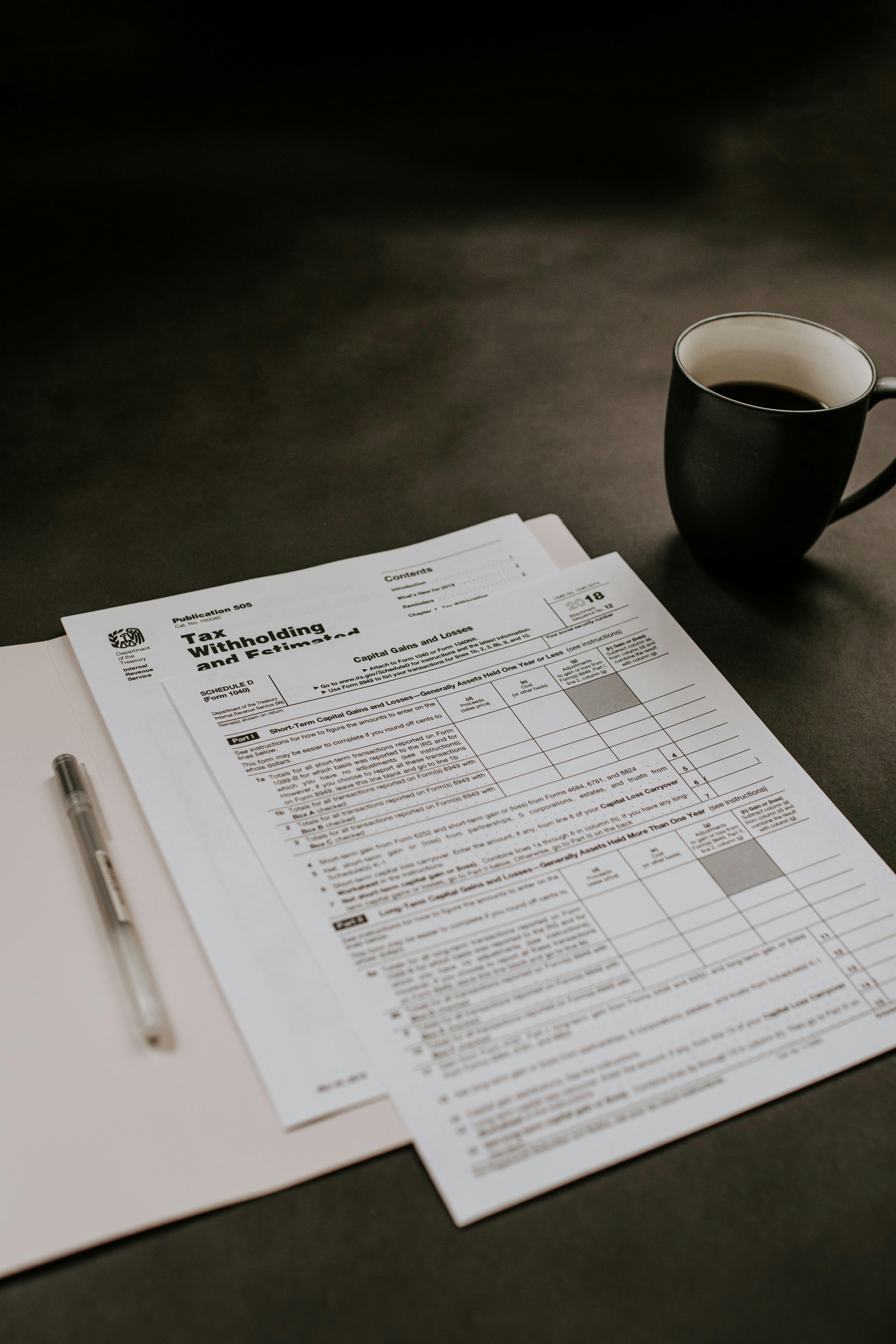Got money drama? You’re not alone. The average American held $16,458 in personal loan debt in 2020. One way to tame your frustration is to write off bad debt for unpaid personal loans you might have doled out throughout the year.
If you meet certain criteria, you can reduce your taxes with a bad debt expense. What’s a bad debt expense, you ask? 👇
A bad debt is an unpaid loan you’ll never receive payment on. This expense can become a tax deduction in the right circumstances. Bad debt is sometimes called uncollectible debt, worthless debt, doubtful accounts, or uncollectible accounts.
And how can you use it to get a break on your tax return?

Can you write off bad debt on your personal taxes?
Short answer: Yes.
Long answer: According to the Internal Revenue Service (IRS), you can deduct an uncollectible debt (AKA bad debt) from your taxes if it meets certain criteria:
- The loan recipient must be unable to repay the debt, and you have to prove it—often with documentation like a spreadsheet of payment history or financial statements (journal entries won’t cut it). Being unable to repay a personal loan means the borrower’s cash flow is lower than the amount of the loan.
- Business-related loans do not count. A loan for the purposes of business expenses or to a business owner may potentially reduce your chances of receiving a write-off. Only nonbusiness loans count (a nonbusiness loan = a personal loan).
- The IRS says, “Nonbusiness bad debts must be totally worthless to be deductible.” A worthless debt means one that was not paid back at all.
- The loan cannot be a gift you provided with the understanding you may not get the money back.
- You can only receive a deduction the year the debt becomes worthless (which may be on or before the loan’s due date, depending on the circumstances).
For example, say the borrower fails to pay any part of a loan due June 2022 and doesn’t have the means to pay it back. Once the deadline hits, that loan is overdue and worthless. However, a borrower may file for bankruptcy in November 2021 without having paid anything on the loan, making that debt a worthless bad debt before the loan’s deadline.

How can bad debt get deducted as short-term capital losses?
If you deal with business taxes, you may know that you can use one of two methods to report a doubtful account (AKA a loan or invoice that may become a bad debt):
- Direct write-off method: A business charges a bad debt as an expense as soon as it becomes clear no payments will be made.
- Allowance method: A business estimates future bad debt at the start of any invoice and charges it to a reserve account.
For more information on the above terms, read about the direct write-off method here and the allowance method here.
However, people dealing with personal loans use a different technique. The IRS considers nonbusiness bad debt from personal loans a type of short-term capital loss.
Typically, short-term capital losses refer to losses on investments held for a year or less 📉. But they also apply to bad debts on personal loans you made.
As of the 2021 tax year, the law on short-term capital losses states: You can use uncollectible accounts to subtract from capital gains, and any extra can be written off your taxable income by up to $3,000.
For example: Say you sold some stocks in 2021 and made $5,000 on top of your initial investments (congrats—that’s a capital gain!). Now, you’ll be subject to capital gains tax. Short-term capital losses let you subtract losses up to $3,000 from capital gains, meaning you’d only owe taxes on $2,000 of investment returns.
Since bad debt on personal loans gets deducted as a short-term capital loss, you could reduce your capital gains taxes by deducting up to $3,000 from any earnings. If you didn’t sell any investments for a profit in 2021, the IRS lets you deduct up to $3,000 directly from your taxable income (which reduces the income taxes you have to pay).
Some personal loans are worth more than $3,000. Once you claim short-term capital losses up to the annual limit, you can roll over any extra value on an uncollectible debt. For example, say you made a personal loan worth $5,000. In this case, you can deduct up to $3,000 the year the debt becomes worthless and roll over the remaining $2,000 as a short-term capital loss the following year.
If you meet all of the criteria for writing off bad debt from a personal loan, you can report your short-term capital losses on IRS Form 8949.
You need a written loan agreement to prove your bad debt loss
Even personal loans require a bit of bookkeeping 😓. Fortunately for you, it’s simple to keep track of personal loan matters.
In order to prove you made the loan with the intention of being repaid, you must present a written loan agreement signed by both parties. Technically, a handwritten agreement counts—but it’s always best to use a formal contract with clear terms. To make this easier, Pigeon provides a and free platform for managing loans with friends, family members, and acquaintances.

Bad debt deduction: More requirements for eligibility
It’s one thing if a person doesn’t want to pay you back. It’s different when they actually cannot afford to do so. The IRS only lets you deduct a bad debt from your taxes when there’s no way someone can pay you at all. For example, the borrower may have filed for bankruptcy or simply does not have enough money to pay you.
You also need to prove that you’ve made a genuine effort to collect the debt. Signing a loan agreement, sending payment reminders, and offering numerous ways to reclaim payment are just a few ways to show you’ve made a genuine effort to collect your debt (Pigeon provides all these values for you).
The IRS doesn’t require you to go to court to prove a debt is worthless if you can show it on your own 👌.
How to prove your loan recipient cannot pay the bad debt expense
You can prove your loan recipient can’t pay you back by showing bank statements or bankruptcy filings (if applicable).
You’ll also need to prove you’ve attempted collection numerous times by showing copies of letters and invoices you sent, plus records of any calls you made. There’s no set number of times you need to reach out to a friend or family member, but keeping a record of your attempts to reach out is key.
Step by step: How to perform a bad debt write-off for a personal loan
We're keeping it 💯. Here’s the checklist on bad debt you’ve been waiting for - take a screenshot, print it out, and check off the boxes as you complete these steps:
☐ Head to Form 8949 to record your bad debt expense on a personal loan you made. The bad debt write-off form is the same one you’ll use to record capital gains and losses. Financially savvy folks may already be familiar with this form.
☐ Part 1, Line 1: Enter the dollar value of the full loan amount you would like to use as a tax deduction.
☐ Column A: Write the borrower’s name.
☐ Column D: Write the proceeds you received, which should be $0.
☐ Column E: Record the amount of money that you haven’t received repayment on. Since the IRS requires the loan to be fully worthless, this should be the same amount you wrote in Part 1, Line 1.
☐ Along with the form and your tax return, attach a personalized “bad-debt statement” that explains the doubtful account in full. This is where you can share documentation about the loan agreement, your contact efforts, and the borrower’s inability to pay. Providing screenshots, exported documentation, and emails courtesy of Pigeon will make your case very strong.
Is it too late to take a bad debt deduction on your tax return? If you just realized you can get nonbusiness bad debts written off on your taxable income, know that you usually only have three years to amend a tax return 🤯. Check which tax year the loan became worthless to see if you can still claim a write-off for it.
Bottom line: Turn your bad debt loss into a gain
Next time you decide to lend money to a friend or family member, make sure you cover all your bases so you can claim a tax write-off if the borrower can’t pay you back. Getting a signed loan agreement, charging interest, and sending payment reminders is a good start.
We made Pigeon to prepare for situations like this because no one wants to be left with bad debt or a strained friendship 🤝.

Want to read more related content? Check out some more of our awesome educational pieces below:



